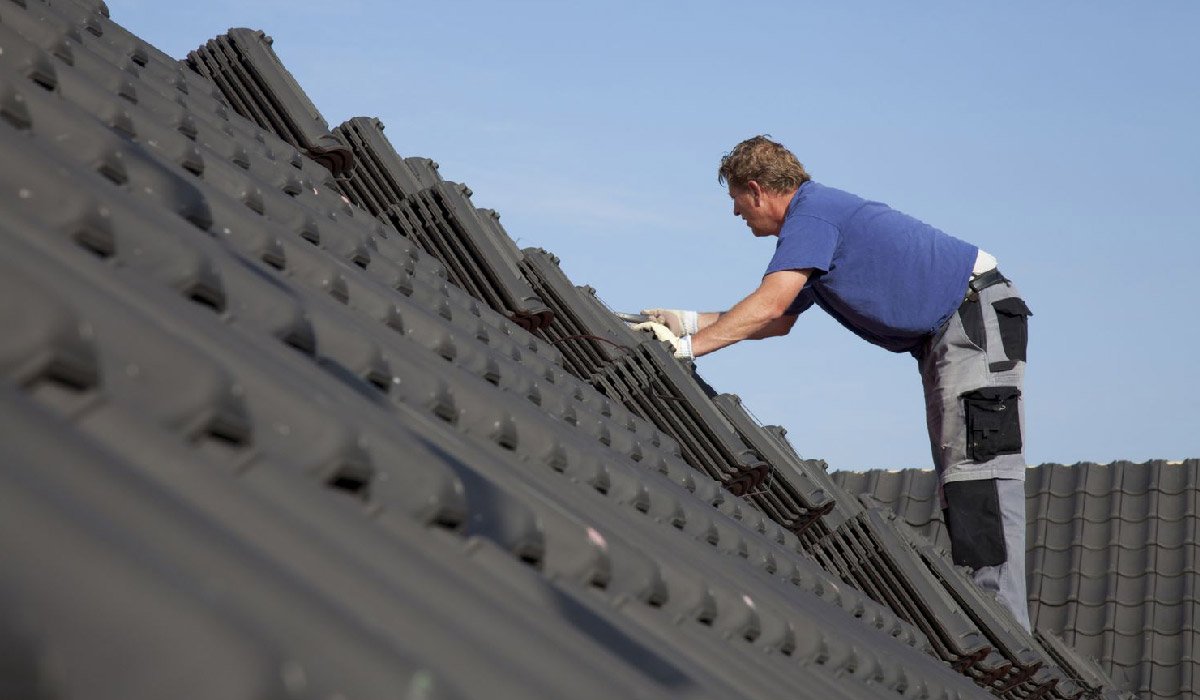Blog
Acryldach Roofing Guide: Powerful Acrylic Roofs That Last Decades

Introduction
In the ever-evolving world of modern architecture and sustainable construction, the materials used in roofing have undergone a significant transformation. One such innovation making a substantial impact across residential, commercial, and industrial sectors is Acryldach—a roofing solution made from acrylic-based materials that offer exceptional transparency, durability, and UV resistance.
Acryldach combines the modern demands of aesthetics, functionality, and long-term reliability in a way few traditional materials can match. Whether it’s the transparent, glass-like appeal of acrylic panels or the watertight, flexible coating applications for flat roofs, Acryldach delivers on all fronts. It is not just a product but a concept that blends architectural vision with cutting-edge material science. Acryldach systems are known for their strength, light weight, and weather resilience, making them the top choice for greenhouses, skylights, patios, and even commercial malls.
In this detailed guide, we’ll explore everything you need to know about Acryldach—its meaning, core components, material advantages, installation, maintenance, pricing, top brands, and its growing role in the future of energy-efficient roofing. This article is designed to help you understand why Acryl dach is becoming the roofing material of choice and how it compares to more traditional options like polycarbonate, glass, fiberglass, and metal roofing.
What Is Acryldach?
Etymology and Meaning
The word Acryldach is a combination of two distinct terms: “Acryl”, which refers to acrylic materials commonly used in plastic engineering, and “Dach”, the German word for roof. Together, the term describes a category of roofing systems that incorporate acrylic materials for structural and protective coverage. Initially used to describe clear or tinted roofing panels, the term Acryl dach has expanded to include both solid acrylic sheets and liquid-applied acrylic coatings. This broad usage allows the term to apply to everything from greenhouse roofing panels to waterproof membranes for flat roofs.
Core Components
At the heart of every Acryl dach system is PMMA, or Polymethyl Methacrylate. This synthetic polymer is known for its excellent optical clarity, impact resistance, and weather durability. PMMA forms the base of acrylic sheets that are used in rigid roof panels. In liquid applications, acrylic emulsions are used as elastomeric coatings that can be rolled or sprayed onto existing roofs. The rigid panels provide structural transparency, while the liquid coatings act as seamless, flexible barriers against water and UV radiation—offering two very distinct but complementary approaches to roofing with acrylic.
Types of Acryldach
Acryldach comes in various forms to suit different structural and aesthetic needs. Flat acrylic sheets are crystal-clear panels that provide maximum light transmission and are ideal for skylights and greenhouses. Corrugated acrylic roofing adds structural strength and is commonly used in carports, patios, and agricultural buildings. Multiwall or twinwall panels have internal air gaps that improve insulation, making them perfect for energy-efficient buildings. Finally, liquid acrylic roof coatings are applied to flat or low-slope roofs, forming a flexible, UV-resistant, and waterproof surface that extends the life of the roof and enhances energy efficiency.
Material Science Behind Acryldach
What Is PMMA?
PMMA is a transparent thermoplastic that has gained popularity for its glass-like qualities without the fragility of actual glass. Acrylic sheets made from PMMA allow up to 92% of visible light to pass through, making them ideal for daylighting applications. The material is inherently resistant to impact, and unlike cheaper plastics, it does not yellow or degrade easily under UV exposure. This clarity and resilience are why Acryldach is favored over traditional roofing in applications where light, appearance, and performance all matter.
UV Resistance and Additives
A key feature of Acryldach is its UV resistance, achieved through the incorporation of special stabilizers during manufacturing. These additives prevent yellowing, brittleness, and degradation caused by long-term exposure to sunlight. Additional treatments include anti-scratch coatings, anti-fog finishes, and infrared-reflective tinting that help manage heat gain in sunny climates. This ensures that the roofing material not only lasts longer but also maintains its aesthetic appeal and structural performance over the years.
Available Colors, Tints, and Finishes
Acryldach is available in a range of colors and finishes to suit different architectural requirements. While clear panels are the most popular, tinted options like bronze, opal, and smoked gray are also widely used to reduce glare and heat. Textured finishes such as frosted or prismatic surfaces offer privacy without sacrificing light diffusion. These customizations allow architects and homeowners to tailor the roofing solution for both form and function, enhancing the design versatility of the Acryl dach system.
Key Features and Benefits
Durability & Longevity
Acryldach systems are built to last. The panels and coatings are resistant to environmental stressors like hail, wind, heavy rain, and snow. With proper installation and maintenance, these systems can offer a lifespan of 20 to 30 years or more. Unlike glass, which can crack, or metal, which can rust, Acryl dach remains stable and dependable for decades, making it a wise investment for long-term use.
Transparency & Light Transmission
One of the most sought-after benefits of Acryldach is its high transparency. The clear acrylic panels are perfect for greenhouses, sunrooms, and skylights where natural light is a priority. By letting in more daylight, Acryldach reduces the need for artificial lighting, creating a brighter, more energy-efficient interior environment.
UV & Heat Control
Thanks to its UV-filtering abilities and heat-reflective coatings, Acryldach helps regulate indoor temperatures and blocks harmful ultraviolet rays. This not only protects interior furnishings from fading but also contributes to a cooler indoor environment—especially important in hot climates.
Lightweight & Easy Installation
Compared to traditional roofing materials like glass or metal, Acryl dach panels are significantly lighter in weight, which reduces the load on the building structure and simplifies transportation and installation. This means fewer labor costs and quicker project completion times, especially in residential or prefab applications.
Safety and Maintenance
Safety is another advantage. Acrylic doesn’t shatter like glass, making it ideal for areas where impact resistance is necessary. It’s also low maintenance, requiring just occasional cleaning with mild soap and water to retain its appearance. Its resistance to corrosion, mold, and algae makes it a favorite for both indoor and outdoor applications.
Use Cases & Applications
Acryldach is highly adaptable, which is why it’s found in a wide range of projects. Residential applications include patios, pergolas, carports, and skylights where homeowners want light-filled yet weather-protected spaces. Commercial uses span shopping malls, office buildings, and outdoor dining areas where both transparency and durability are required. Industrial buildings benefit from Acryldach’s use in daylighting panels that reduce reliance on artificial lighting. In agriculture, it’s used for greenhouses, nursery structures, and barn roofing. Public infrastructure like bus stops, pedestrian bridges, and walkways also make extensive use of Acryl dach due to its clean look and all-weather performance.
Acryldach vs Other Roofing Materials
When compared to polycarbonate, Acryldach offers better clarity, resists yellowing longer, and provides a more refined look. Compared to glass, it is lighter and shatter-resistant, making it safer and easier to install. Unlike fiberglass, which can become brittle and discolored, acrylic roofing maintains its structural integrity and appearance. Compared to metal roofing, Acryl dach provides natural light, eliminating the need for skylights in many cases. In summary, it strikes a unique balance of beauty, performance, and safety that most materials fail to offer.
| Feature | Acryldach | Polycarbonate | Glass | Metal | Fiberglass |
|---|---|---|---|---|---|
| Weight | Light | Medium | Heavy | Heavy | Medium |
| UV Resistance | High | Medium | Medium | Low | Low |
| Transparency | High | Medium | High | None | Low |
| Impact Resistance | High | Very High | Low | High | Medium |
| Maintenance | Low | Medium | High | Medium | High |
| Cost | Moderate | Moderate–High | High | Low | Low |
Installation Process
DIY vs Professional
While DIY installation is possible for small-scale Acryl dach projects like pergolas or patios, professional installation is recommended for large roofs or coatings to ensure structural safety and compliance with building codes.
Step-by-Step Guide for Panel Installation
Begin with accurate measurement of the roof area, followed by the construction of a support frame made from treated wood or aluminum. Cut the acrylic panels carefully using fine-toothed blades and handle them with gloves to avoid scratches. Fix them using UV-resistant screws and rubber washers, and seal joints using silicone-based sealants to prevent water infiltration. Lastly, trim the edges and inspect the installation for any gaps or stress points.
Liquid Acryldach Installation
This involves cleaning and priming the surface, followed by applying the liquid acrylic coating using a roller or spray system. Once cured, the result is a seamless, flexible, waterproof membrane ideal for flat roofs.
Maintenance, Cleaning, and Repairs
Routine cleaning with mild detergent and a soft cloth keeps the surface clear and attractive. Avoid abrasive tools that could scratch the surface. To prevent yellowing or surface degradation, choose panels with UV coatings. Minor cracks or leaks can be patched with acrylic-compatible sealants, while more severe damage may require panel replacement or re-application of a liquid membrane.
Cost Breakdown & ROI
Acryldach panels generally range in cost depending on thickness, size, brand, and coatings. While more expensive than basic metal sheets, their long-term value is unmatched. Energy savings from natural lighting and lower maintenance costs make Acryl dach cost-effective in the long run. The return on investment typically becomes evident within 3 to 5 years due to reduced lighting and cooling bills.
Top Brands and Manufacturers
Notable names include ACRYLITE®, known for premium-grade clear and tinted sheets; Stabilit / Acrylit, which manufactures corrugated roofing sheets; Acrylabs, offering advanced liquid coating systems; and Palram’s SUNTUF®, often compared as a polycarbonate alternative but lacks the clarity and longevity of Acryl dach.
Sustainability and Green Building
Acryldach aligns with green building goals due to its high energy efficiency, long lifespan, and recyclability. Many acrylic products are compatible with LEED standards and meet ASTM and ISO certifications for safety and sustainability. Its use in daylighting drastically reduces energy consumption, supporting eco-conscious architecture.
Challenges and Limitations
Acryldach, while superior in many areas, comes with a few limitations. It’s generally more expensive than basic roofing options like asphalt. It is prone to scratching, although protective coatings mitigate this. Thermal expansion requires careful planning during installation to avoid warping. Additionally, noise from rain can be more noticeable unless acoustic insulation is added.
Real-World Case Studies
A residential rooftop atrium in Zurich uses a curved multiwall Acryldach system for winter gardening, providing insulation and daylight year-round. A café in Amsterdam installed a tinted retractable Acryldach to offer shade while preserving natural light. In Berlin, a public walkway is covered by an elegant high-arched Acryl dach, balancing utility with urban design.
Future Trends in Acryldach Technology
The future of Acryldach lies in smart roofing innovations like electrochromic tinting, solar panel integration, and bio-based PMMA production. With modular prefabricated kits on the rise, acrylic roofing will soon be a staple in off-grid homes, eco-villages, and vertical farms.
Conclusion
Acryldach represents a turning point in the roofing industry by blending elegance, durability, and eco-efficiency. Whether you’re designing a commercial space, enhancing a residential property, or seeking innovative green solutions, Acryldach offers unmatched value. With its long lifespan, low maintenance, and high performance, Acryldach is more than just a roofing material—it’s a future-proof architectural upgrade.
FAQs About Acryldach
What is Acryldach used for?
Acryldach is used for roofing in homes, greenhouses, patios, skylights, and commercial buildings. It provides clear, strong, and weather-resistant coverage while allowing natural light to pass through.
How long does Acryldach last?
A high-quality Acryldach roof can last 20 to 30 years or more with proper maintenance. Its acrylic material resists UV rays, weather, and impact, making it a long-lasting roofing choice.
Is Acryldach better than glass or polycarbonate?
Yes, Acryldach is lighter than glass and clearer than polycarbonate. It offers better UV resistance than polycarbonate and is safer and more durable than glass, making it ideal for modern roofing.
Can I install Acryldach myself?
Yes, Acryldach panels can be installed as a DIY project for small areas like patios or pergolas. For larger roofs or coatings, it’s best to hire professionals for safe and proper installation.
Is Acryldach waterproof?
Yes, Acryldach is fully waterproof. Both the solid acrylic panels and the liquid-applied coatings create a water-resistant barrier that protects roofs from leaks, rain, and moisture.
For More Information Visit Coopermagazine
-

 Celebrity1 year ago
Celebrity1 year agoWho Is Jennifer Rauchet?: All You Need To Know About Pete Hegseth’s Wife
-

 Celebrity1 year ago
Celebrity1 year agoWho Is Mindy Jennings?: All You Need To Know About Ken Jennings Wife
-

 Celebrity1 year ago
Celebrity1 year agoWho Is Enrica Cenzatti?: The Untold Story of Andrea Bocelli’s Ex-Wife
-

 Celebrity1 year ago
Celebrity1 year agoWho Is Klarissa Munz: The Untold Story of Freddie Highmore’s Wife
















